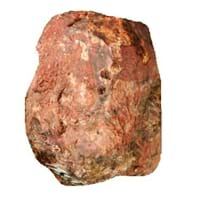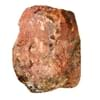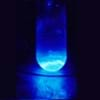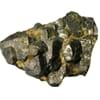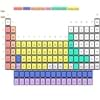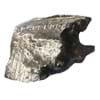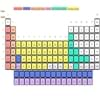Francium vs Tin
Periodic Table
Symbol
Fr
Sn
Group Number
1
17
14
4
Period Number
7
5
Block
s block
p block
Element Family
Alkali
Post-Transition
CAS Number
7440735
18
7440315
99+
Space Group Name
Not Available
I41/amd
Space Group Number
Not Available
141.00
7
Facts
Interesting Facts
- 223 Francium has the longest half life at 21.8.
- Francium metal is produced by alpha decay in 227Actinium 227.
- In the list of most abundant element Tin is ranked 49th.
- Tin metal does not react with water as well as does not corrode in it.
Sources
Formed by Decay Process, Mining
Found in Minerals, Mining
History
Who Discovered
Marguerite Perey
Unknown
Discovery
In 1939
Before 3500 BC
Abundance
Abundance In Universe
Not Available
4 * 10-7 %
20
Abundance In Sun
~-9999 %
~0.0000009 %
19
Abundance In Meteorites
Not Available
0.00 %
24
Abundance In Earth's Crust
Not Available
0.00 %
34
Abundance In Oceans
Not Available
0.00 %
26
Abundance In Humans
Not Available
0.00 %
13
Uses
Uses & Benefits
- Francium has no known uses as it has a half life of only 22 minutes.
- Tin-niobium alloy is used for producing superconducting magnets.
- Tin salt known as a tin II chloride, it is used as a mordant and as a reducing agent for dyeing calico and silk.
Industrial Uses
NA
Automobile Industry, Chemical Industry, Food Industry
Medical Uses
NA
Dentistry
Other Uses
NA
NA
Biological Properties
Toxicity
NA
Non Toxic
Present in Human Body
No
Yes
In Blood
0.00 Blood/mg dm-3
37
0.38 Blood/mg dm-3
10
In Bone
0.00 p.p.m.
36
1.40 p.p.m.
16
Physical Properties
Melting Point
27.00 °C
99+
231.90 °C
99+
Boiling Point
677.00 °C
99+
2,270.00 °C
99+
Appearance
Physical State
Solid
Solid
Color
NA
Silvery White
Luster
NA
NA
Hardness
Mohs Hardness
Not Available
1.50
18
Brinell Hardness
Not Available
50.00 MPa
99+
Speed of Sound
Not Available
2,730.00 m/s
32
Optical Properties
Allotropes
No
Yes
α Allotropes
Not Available
Grey Tin (alpha Tin, Tin Pest)
β Allotropes
Not Available
White Tin (Beta Tin)
γ Allotropes
Not Available
Rhombic Tin (gamma Tin)
Chemical Properties
Chemical Formula
Fr
Sn
Isotopes
Known Isotopes
33
6
35
4
Electronegativity
Pauling Electronegativity
0.70
99+
1.96
8
Sanderson Electronegativity
Not Available
1.49
15
Allred Rochow Electronegativity
0.86
99+
1.72
4
Mulliken-Jaffe Electronegativity
0.68
25
2.21
3
Allen Electronegativity
0.67
99+
1.82
11
Electropositivity
Pauling Electropositivity
3.30
1
2.04
99+
Ionization Energies
1st Energy Level
380.00 kJ/mol
99+
708.60 kJ/mol
33
2nd Energy Level
Not Available
1,411.80 kJ/mol
99+
3rd Energy Level
Not Available
2,943.00 kJ/mol
30
4th Energy Level
Not Available
3,930.30 kJ/mol
99+
5th Energy Level
Not Available
7,456.00 kJ/mol
13
Electrochemical Equivalent
8.32 g/amp-hr
1
1.11 g/amp-hr
99+
Electron Work Function
Not Available
4.42 eV
16
Other Chemical Properties
Ionization, Radioactive Isotopes, Radioactivity, Solubility
Ionization, Solubility
Atomic Properties
Atomic Number
87
31
50
99+
Electron Configuration
[Rn] 7s1
[Kr] 4d10 5s2 5p2
Crystal Structure
Body Centered Cubic (BCC)
Tetragonal (TETR)
Crystal Lattice
BCC-Crystal-Structure-.jpg#100
TETR-Crystal-Structure-of-Tin.jpg#100
Atom
Number of Protons
87
31
50
99+
Number of Neutrons
136
17
69
99+
Number of Electrons
87
31
50
99+
Radius of an Atom
Atomic Radius
Not Available
140.00 pm
38
Covalent Radius
260.00 pm
1
139.00 pm
99+
Van der Waals Radius
348.00 pm
1
217.00 pm
23
Atomic Weight
223.00 amu
27
118.71 amu
99+
Atomic Volume
Not Available
16.30 cm3/mol
32
Adjacent Atomic Numbers
Valence Electron Potential
8.00 (-eV)
99+
83.50 (-eV)
14
Lattice Constant
Not Available
583.18 pm
7
Lattice Angles
NA
π/2, π/2, π/2
Lattice C/A Ratio
Not Available
Not Available
Mechanical Properties
Density
Density At Room Temperature
1.87 g/cm3
99+
7.37 g/cm3
99+
Density When Liquid (at m.p.)
Not Available
6.99 g/cm3
34
Tensile Strength
Not Available
Not Available
Viscosity
Not Available
Not Available
Vapor Pressure
Vapor Pressure at 1000 K
Not Available
0.00 (Pa)
17
Elasticity properties
Shear Modulus
Not Available
18.00 GPa
36
Bulk Modulus
Not Available
58.00 GPa
20
Young's Modulus
Not Available
50.00 GPa
36
Poisson Ratio
Not Available
0.36
8
Other Mechanical Properties
NA
Ductile, Malleable
Magnetic Properties
Magnetic Characteristics
Specific Gravity
Not Available
7.31
99+
Magnetic Ordering
Paramagnetic
Diamagnetic
Electrical Properties
Electrical Property
Poor Conductor
Superconductor
Resistivity
3.00 nΩ·m
99+
115.00 nΩ·m
28
Electrical Conductivity
0.03 106/cm Ω
40
0.09 106/cm Ω
23
Electron Affinity
Not Available
107.30 kJ/mol
8
Thermal Properties
Specific Heat
Not Available
0.23 J/(kg K)
28
Molar Heat Capacity
Not Available
27.11 J/mol·K
20
Thermal Conductivity
15.00 W/m·K
99+
66.80 W/m·K
25
Critical Temperature
Not Available
Not Available
Thermal Expansion
Not Available
22.00 µm/(m·K)
20
Enthalpy
Enthalpy of Vaporization
Not Available
290.40 kJ/mol
32
Enthalpy of Fusion
Not Available
7.03 kJ/mol
99+
Enthalpy of Atomization
71.00 kJ/mol
99+
301.30 kJ/mol
35
Standard Molar Entropy
Not Available
51.20 J/mol.K
29
|
||
|
||
|
|
||
|
||
|
